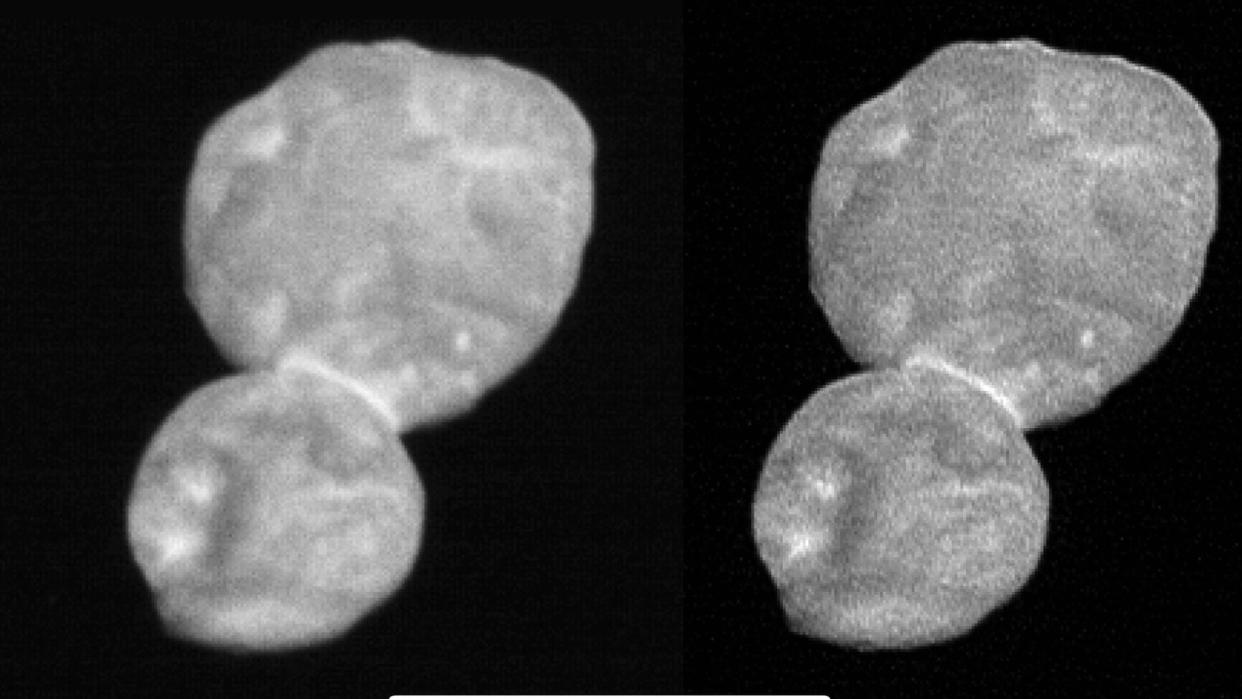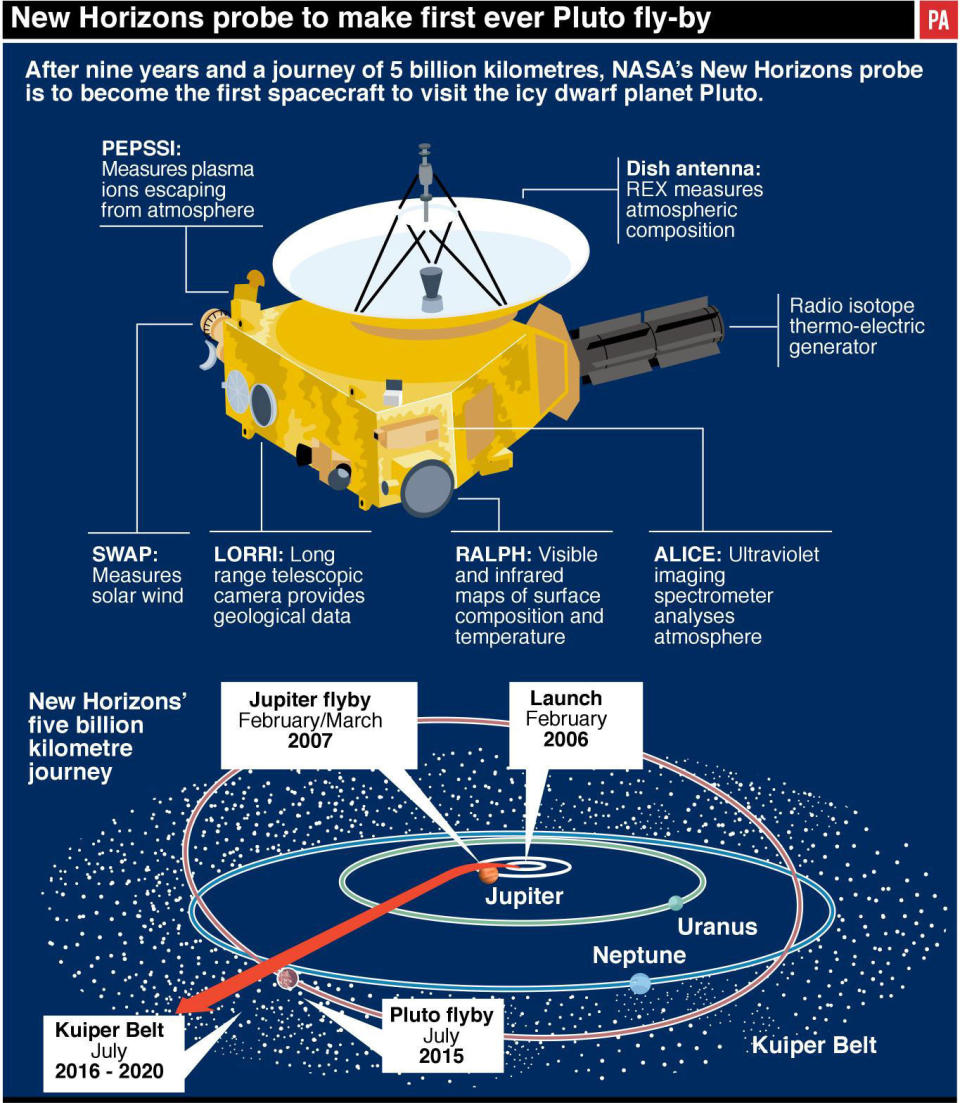NASA hi-res images of most distant world ever explored finds 21-mile-high ‘snowman’

A NASA probe has beamed back images of an object lying one billion miles past Pluto – and the hi-res images show it looks like a 21-mile-high snowman.
The images of Ultima Thule were captured by NASA’s New Horizon spacecraft – and show the object is formed of two spheres, combined into one.
Alan Stern, principal investigator for New Horizons, said: ‘It is only really the size of something like Washington DC and it is about as reflective as garden variety dirt.
‘It’s a snowman if it’s anything at all.
‘We were basically chasing it down in the dark at 32,000 mph. It is going to revolutionise our knowledge of planetary science.’

At four billion miles from the Sun, Ultima Thule is the most distant world ever explored by a spacecraft from Earth.
MORE: Pedestrian killed by helicopter that landed on top of him at Brazil beach resort
MORE: Police mocked for sharing e-fit of suspected robber who looks like the Grim Reaper
Jeff Moore, New Horizon’s geological and geophysics lead, said Ultima Thule is ‘perhaps the most primitive object that has yet been seen by any space craft’.
#UltimaThule used to be 2 separate objects. It likely formed over time as a rotating cloud of small, icy bodies started to combine. Eventually, 2 larger bodies remained & slowly spiraled closer until they touched, forming the bi-lobed object we see today: https://t.co/ZuxLDtzW9c pic.twitter.com/FwWDAaAdey
— NASA (@NASA) January 2, 2019
‘These are the only remaining basic building blocks in the back yard of the solar system that we can see that everything else that we live on, or receive through our telescopes, or visit with our spacecraft, were formed from.
‘Think of New Horizons as a time machine that has brought us back to the very beginning of the solar system, to a place where we can observe the most primordial building blocks of the planets.”
Ultima Thule was formed by the joining of objects orbiting around each other.
NASA said, ‘This historic image, the highest resolution image released so far, was made at a range of about 28,000 kilometers only 30 minutes before the New Horizons closest approach. Likely the result of a gentle collision shortly after the birth of the Solar System, Ultima Thule is revealed to be a contact binary, two connected sphere-like shapes held in contact by mutual gravity.’


